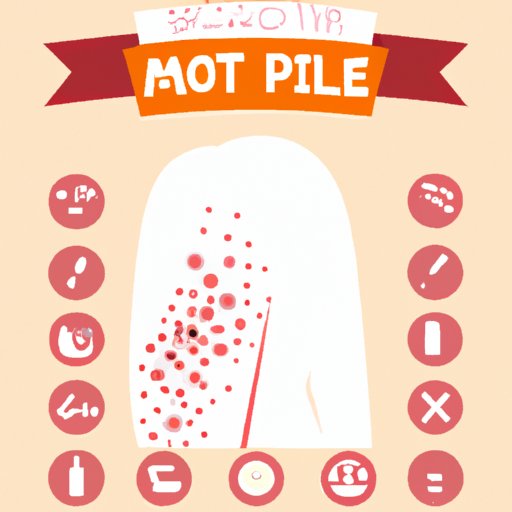Introduction
Skin tags, or acrochordons, are small, fleshy growths that hang off the skin. They are benign and generally painless, but they can be unsightly and sometimes cause discomfort. It’s important to understand what skin tags look like and how to identify them so you can take appropriate action if needed.

A Comprehensive Guide to Understanding Skin Tags: What They Look Like and How to Identify Them
So, what do skin tags look like? Generally speaking, skin tags are small, soft, fleshy growths that protrude from the skin. They may be round or oval in shape, and range in size from 1 millimeter to 5 centimeters. They usually have a narrow base that attaches to the skin, and a broader top. Skin tags can be light tan to dark brown in color and may be smooth or wrinkled.
It’s important to note that there are other conditions that can look similar to skin tags. These include seborrheic keratoses (benign wart-like growths), moles, warts, cysts, and more. It’s important to understand the differences between these conditions so you can identify skin tags correctly.
The best way to identify skin tags is to have them examined by a doctor or dermatologist. They can provide you with a diagnosis and discuss treatment options with you. Your doctor may also perform a biopsy to confirm the diagnosis.
Spotting Skin Tags: What Do They Look Like and How Common Are They?
So, what do skin tags typically look like? As mentioned above, skin tags are usually small, fleshy growths that protrude from the skin. They may be light tan to dark brown in color and may be smooth or wrinkled. They usually have a narrow base that attaches to the skin and a broader top.
Skin tags usually appear in areas where the skin rubs together, such as the neck, armpits, groin, eyelids, and under the breasts. They can also appear on the face, arms, and legs.
Skin tags are quite common, especially in people over the age of 50. However, they can occur in people of any age. According to some estimates, up to 46 percent of people have at least one skin tag.
Don’t Freak Out: A Visual Guide to Identifying Skin Tags
If you think you may have a skin tag, it’s important to get it checked out by a doctor. In the meantime, here are some pictures of skin tags to help you identify them.
It’s also important to understand the differences between skin tags, moles, and other skin conditions. Moles are typically darker than skin tags and may be raised or flat. Warts are usually rough and scaly, while cysts are fluid-filled bumps. If you’re unsure, it’s best to get it checked out by a doctor.
The Skinny on Skin Tags: What Do They Look Like and How Can You Treat Them?
Once you’ve identified a skin tag, you may want to consider treating it. There are several treatment options available, including freezing, burning, cutting, or tying off the skin tag. It’s important to discuss the risks and benefits of each option with your doctor.
You can also try removing skin tags at home. Over-the-counter products such as creams, ointments, or bandages can be used to remove skin tags. It’s important to follow the directions carefully and use the product as directed.
In some cases, it’s best to leave skin tags alone. If the skin tag is not causing any symptoms or discomfort, it’s often best to leave it alone. However, if the skin tag is causing irritation or discomfort, it’s best to have it removed by a doctor.
From Moles to Skin Tags: How to Tell the Difference and Take Action
It’s important to know how to tell the difference between skin tags and moles. Moles are usually darker than skin tags and may be raised or flat. Moles may also contain hair. Skin tags, on the other hand, are usually light tan to dark brown in color and are usually smooth or wrinkled.
If you think you may have a skin tag or a mole, it’s best to have it checked out by a doctor. Your doctor can provide you with a diagnosis and discuss treatment options with you.
If you’re concerned about a skin tag or mole, it’s important to see a doctor. Your doctor can examine the growth and provide you with a diagnosis. They can also discuss treatment options with you.
Conclusion
Skin tags are small, harmless growths that can appear on the skin. While they are generally painless, they can be unsightly and sometimes cause discomfort. It’s important to understand what skin tags look like and how to identify them so you can take appropriate action if needed.
This guide provides an in-depth look at what skin tags look like and how to identify them, as well as tips on how to tell the difference between skin tags and other skin conditions. It also covers treatment options for skin tags and when to seek medical advice.
If you think you may have a skin tag or a mole, it’s important to see a doctor. Your doctor can provide you with a diagnosis and discuss treatment options with you.


